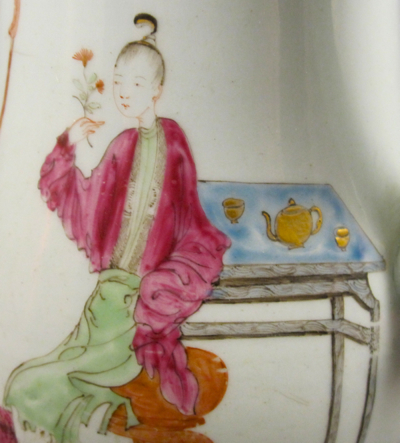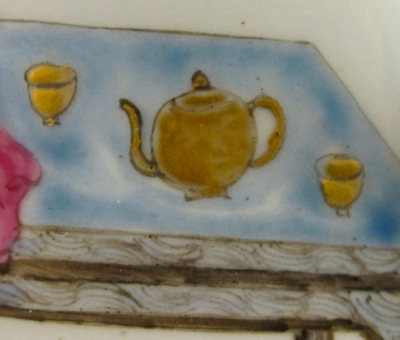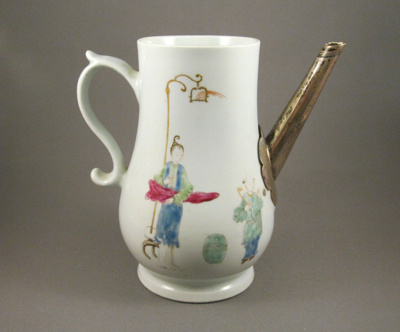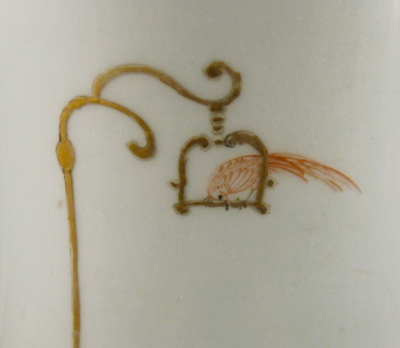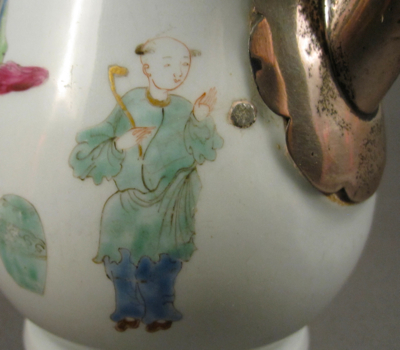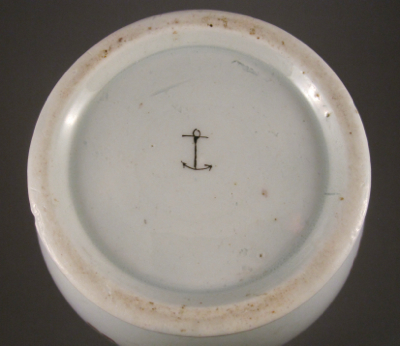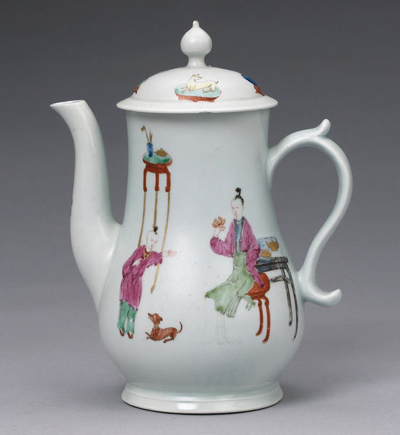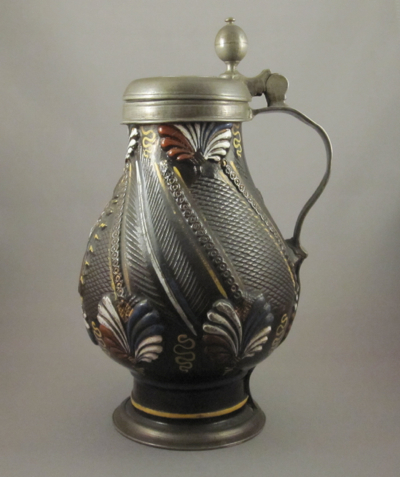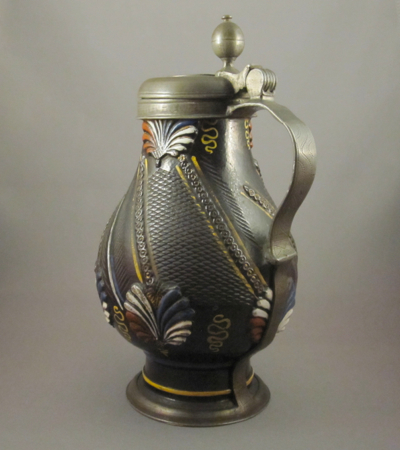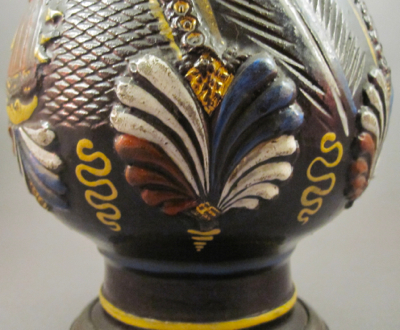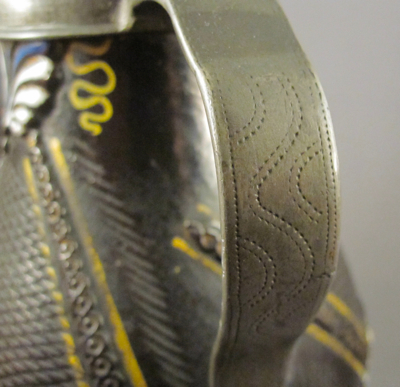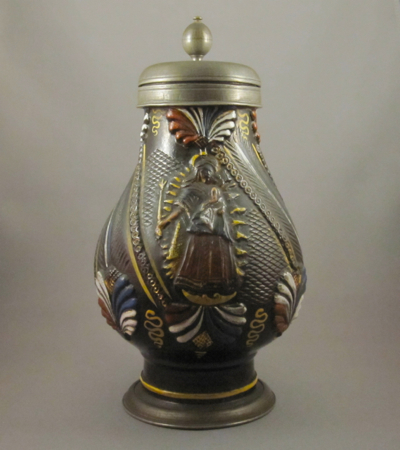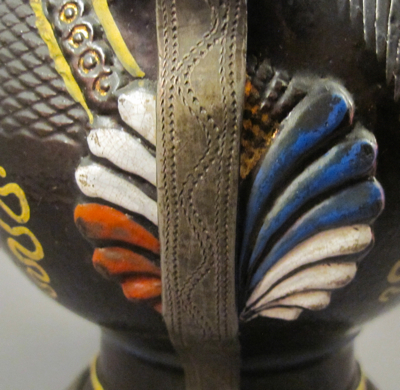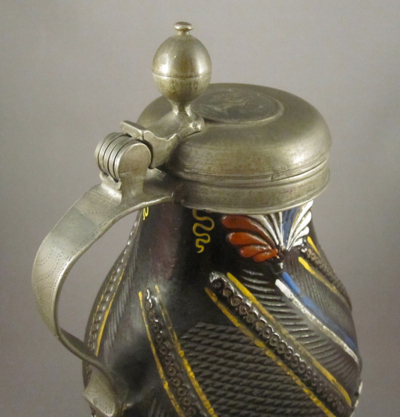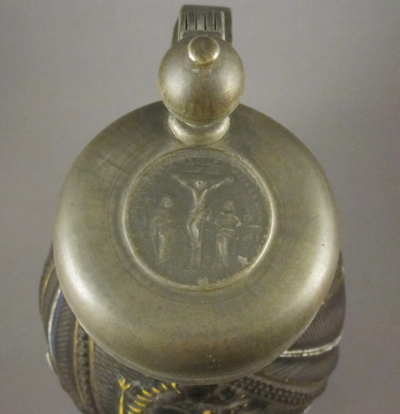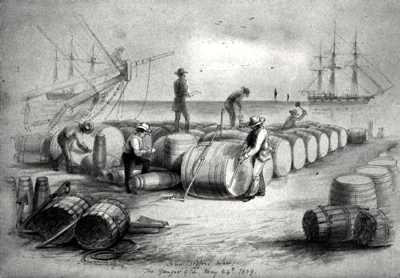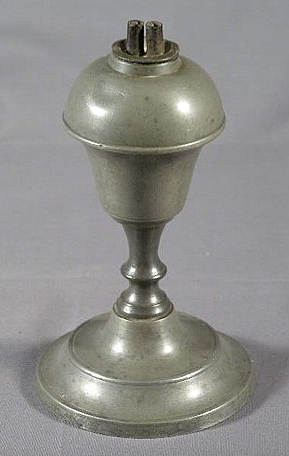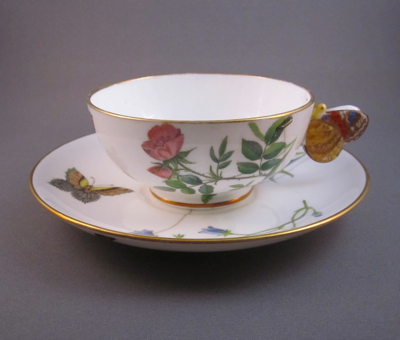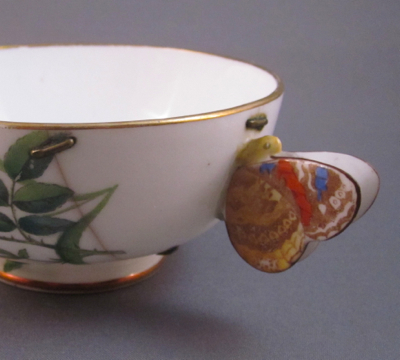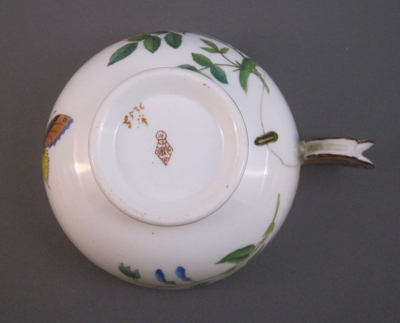This small porcelain baluster shaped coffee pot with spreading foot was made in England by Worcester during the scratch cross period (1753-1755). It is decorated with Chinese figures, a parrot on a stand, furniture, and tea set; my favorite detail. Decorated in England, it copied the Mandarin style done by the Chinese, who themselves adapted European decoration for wares exported to North America and Europe. Marked on the underside with a scratch line and a painted anchor artist mark, this pot, minus its original lid, stands 5-3/4″ high.
Although the fragile and more apt to break “S” shaped handle with curled thumb rest remains intact, the original curved spout did not fare so well. A silversmith fashioned a fine silver spout with scalloped plate to replace the missing original. I have many examples of silver replacement spouts with the same form on pots in my collection, so I imagine this must have been a popular style used by silversmiths in the 18th and 19th century.
This is what a “perfect” example of the coffee pot and lid look like
Photo courtesy of Bonhams

